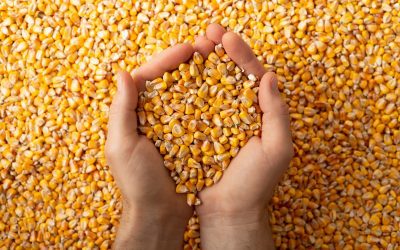High oleic soybean oil demand makes a difference in price
Posted: May 3, 2023
Category:
Indiana Corn and Soybean Post - Spring 2023, ISA, News

High oleic soybean oil expands uses for U.S.-grown soybeans, which gives soybean farmers more demand for their products. Mike Beard chose to devote a portion of his soybean acres to high oleic soybean varieties because he’s excited about growing demand for the oil.

before deciding what crops to grow each spring.
“More uses for our oil means a more valuable market for our soybeans,” said Beard, a soy checkoff farmer-leader
from Frankfort, Ind. “We have the opportunity to gain back some of the 4 billion pounds of oil demand that we lost
to alternative oil sources when the government required trans-fat labeling.”
The United Soybean Board has promoted high oleic soybeans to Midwest farmers as a premium product.
High oleic soybean oil is used in commercial kitchens and bakeries because it is heat-tolerant and shelf-stable without modification. Therefore, it can be used without creating trans fats. It’s also lower in saturated fats than other similar oils.
Restaurants like using soybean oil for frying because it doesn’t break down like other oils and it has the neutral
flavor cooks want. Companies that make products like Nestle’s Coffee-Mate choose the oil to increase stability without adding trans fats. The same features that make high oleic a good choice for restaurants – heat tolerance
and stability – make it attractive for industrial applications, too.
“There are high expectations for high oleic in the industrial market,” Beard said. “High oleic soybean oil can replace petroleum in lubricants and synthetic motor oil. That could be quite a market for high oleic.”
To meet the growing demand for high oleic soybean oil, more farmers have to choose to plant high oleic soybean varieties. Beard says the outlook for farmers is good, too.
“You know, not all soybeans yield exactly the same, and high oleic yields right along with the upper tier of
production from commodity beans,” he said. “I had the opportunity to purchase high-yielding varieties in my desired maturity group at planting, and I’m excited about the possibilities that high oleic soybeans afford us as an industry.”
A main benefit for high oleic soybeans for farmers is the added premium for growing them. During the last two years, premiums have been $1.25 per bushel. For the 2023 crop, they are around $2.20 per bushel.
High oleic soybean acres topped 800,000 in 2022 but are expected to climb to 1.2 million in 2023. Farmers can
capitalize on this demand by securing contracts soon. Farmers can learn how to secure contracts for high oleic soybean production and the premiums that come with them by visiting www.unitedsoybean.org
“This is a great opportunity for farmers to add value to their land,” said John Motter, USB Past Chair and an Ohio
farmer who started growing high oleic soybeans in 2011. “It’s an attractive way for a farmer to make additional revenue, ensuring reliability to meet customer demand and furthering the reputation of U.S. Soy.”



